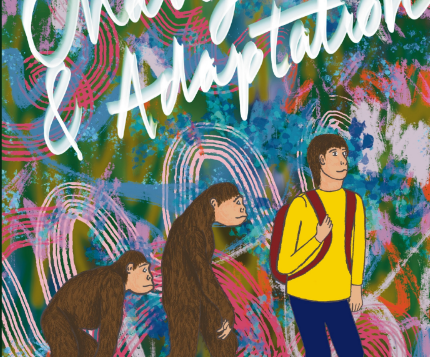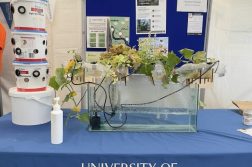Climate change is undoubtedly one of the biggest changes we face today. But how to respond? Besides switching to renewable energy and electric vehicles, tree-planting schemes have gained popularity as a simple way to stem carbon emissions. For example, the Bonn Challenge aims to cover 350 million hectares with forest by 2030. Given that nature-based solutions like this could make 1/3 of emissions cutbacks needed by 2030 to avoid the most severe trajectories for global temperature rise, projects like these seem like a positive step forward. However, it’s more complex than just putting seeds in the ground. If we’re not careful, our best-laid plan(t)s can do more harm than good – so we need to think twice before giving these projects our seal of approval.
One of the major issues involved in tree-planting projects is that they’re often focused on creating profitable tree farms rather than restoring natural forest. Nearly half the projects planned for the Bonn Challenge involve plantations growing only one type of tree. This is both terrible for biodiversity and massively counterproductive – the moment a disease affecting that species comes along, you’ll be waving goodbye to the whole forest. Particularly as we prepare for more extreme weather events, we need a mixture of trees adapted to different conditions so that some can survive when the worst happens.
What’s more, natural forests are 40 times better at capturing carbon than plantations, leading scientists to predict that a plantation-focussed Bonn Challenge targets will fail miserably in its targets. Particularly if the trees are used for logging, they’ll release much of the carbon they had stored back into the atmosphere once cut down, and the soil around them, once disturbed, will release carbon trapped within it. This ultimately creates a net-gain of CO2 emissions. And even if these trees don’t release all their trapped Co2 back into the atmosphere once they’re felled, they wouldn’t have sequestered much in the first place: the rate of carbon sequestration increases exponentially with age, so they wouldn’t have reached the maturity needed for significant carbon capture.
So, monocultures aren’t a good idea. Equally important is where we plant the forests. If we plant them in an area usually covered by snow, it can mean that that patch of the Earth’s surface has a darker, more heat-absorbent colour than before. So, by covering normally snow-covered areas with forest, you can end up increasing temperatures. Then there’s the problem of soil – if it’s already depleted of carbon, adding trees will help lock more carbon into the ground, but if the soil is already carbon-rich, the trees don’t make much difference to the overall carbon storage of the ecosystem. In fact, they might deplete it. This was the case in one study, for example, where trees were planted on heather moorlands in Scotland, and one of the sites experienced a net loss in the ecosystem’s carbon levels. Finally, forest land shouldn’t end up replacing other important habitats – land that was once forest should be returned to forest, but if the land is already a thriving grassland, then it should be left as such. Otherwise, we risk losing species that are adapted to those habitats, as well as a different but also highly effective carbon sink.
Then there’s the impact on people. While offsetting our carbon emissions by donating to a tree-planting scheme might make us feel better about ourselves, the same can’t always be said of the people who live on the land involved. As land is bought or reserved, local people can lose both their homes and their farming and hunting land. Such has been the case in the Cordillera Azul National Park in Peru – where members of Kichwa communities were unable to access the land they traditionally inhabited to gather food without a permit. Even with one, they could only access it for a limited number of days. Then there are stories of people being forcibly removed from their lands, or unable to complain of crimes committed against them on said land because they don’t have the right to be there legally in the first place. In such cases, supporting reforestation/ afforestation schemes can be truly detrimental to local people’s livelihoods.
So, it’s about much more than just sticking some saplings in the soil. The forests need to be actual forests, not just rows of rubber trees. Location is important, as is considering potential threats and their resistance to those threats. And then we have to ask ourselves if those projects improve the lives of people living on the land (e.g. helping them deal with flooding issues, increasing soil fertility for their food production) – or if the trees are infringing on people’s human rights. For sure, tree-planting can help us to take carbon out of the atmosphere, and this doesn’t mean we should abandon such projects, but they need to be done properly. So, if companies and governments say they’re saving the planet with their grand plans to plant X number of trees by X year to take X tonnes of carbon out of the atmosphere, don’t just take their word for it. Because in some cases, these heroic claims couldn’t be further from the truth.
Sources:
Hawes, Molly (2018) Planting Carbon Storage https://www.nature.com/articles/s41558-018-0214-x
Game and Wildlife Conservation Trust (2020) Planting trees doesn’t always increase carbon removal from the atmosphere over time. https://www.gwct.org.uk/wildlife/research/upland-biodiversity/planting-trees-carbon-removal-from-the-atmosphere/
Lewis, Simon and Wheeler, Charlotte (2019) The scandal of calling plantations ‘forest restoration’ is putting climate targets at risk. https://theconversation.com/the-scandal-of-calling-plantations-forest-restoration-is-putting-climate-targets-at-risk-114858
Osman, Ahmed I., Fawzy, Samer, Lichtfouse, Eric and Rooney, David W. Rooney (2023) Planting trees to combat global warming https://link.springer.com/article/10.1007/s10311-023-01598-y
Plumpton, Heather (2019) How to design a forest fit to heal the planet https://theconversation.com/how-to-design-a-forest-fit-to-heal-the-planet-128283
STEPS centre (2021) https://steps-centre.org/blog/carbon-offsetting-tree-planting-climate-crisis/
Song, Lisa (2019) Why Carbon Credits for Forest Preservation May be Worse than Nothing https://features.propublica.org/brazil-carbon-offsets/inconvenient-truth-carbon-credits-dont-work-deforestation-redd-acre-cambodia/
Rugh, Nathaniel and Llavero-Pasquina, Marcel (2023) Discrediting Carbon Credits https://theecologist.org/2023/aug/18/discrediting-carbon-credits




